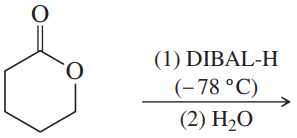Textbook Question
Predict the product of the following reaction sequences.
(b)


 Verified step by step guidance
Verified step by step guidance Verified video answer for a similar problem:
Verified video answer for a similar problem:



 2:07m
2:07mMaster Why LiAlH4 doesn't work with a bite sized video explanation from Johnny
Start learning